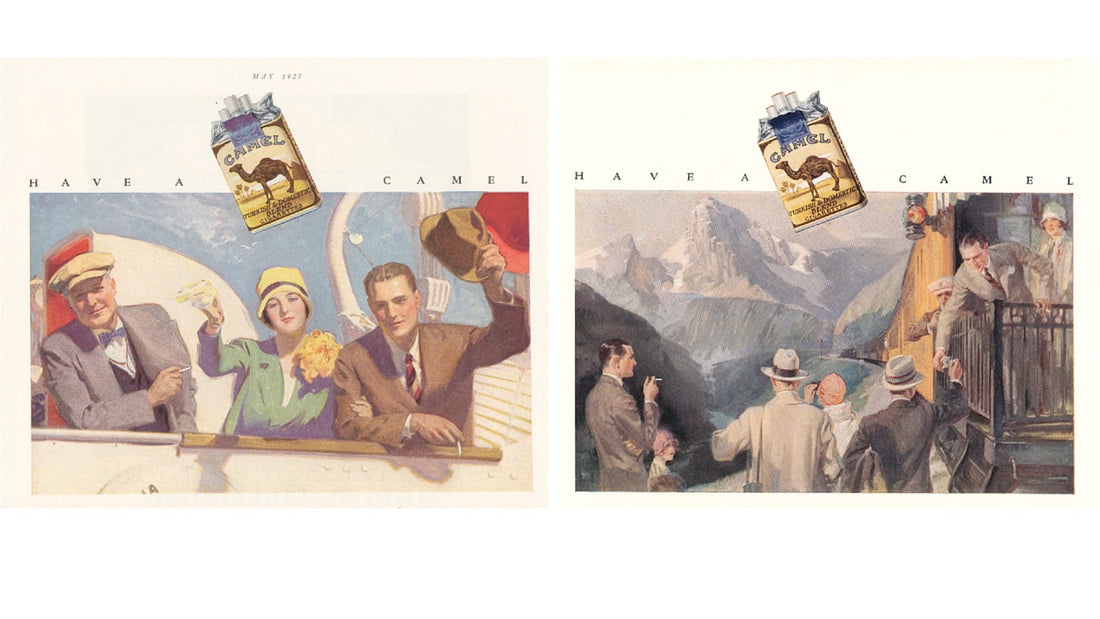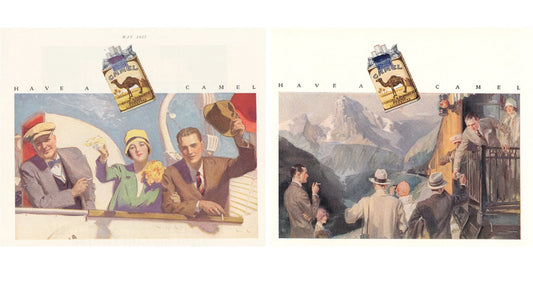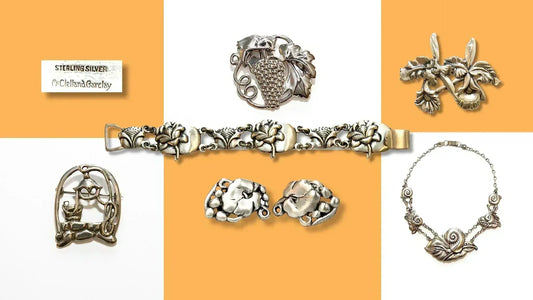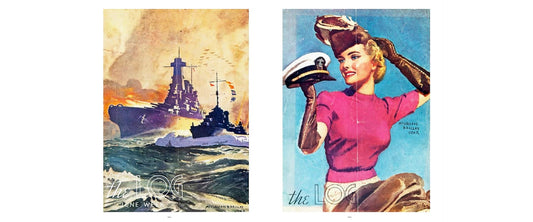
New Camel City Exhibit features Barclay's works at the Reynolda Museum
Share
The new Camel City exhibit at the Reynolda Museum will feature some of McClelland Barclay's commercial illustration works for Camel cigarettes brand from the 1920s. The exhibit celebrates the R.J. Reynolds Tobacco Company's 150th anniversary.
Camel City: Tobacco and Transformation: 1875-1964 opens August 16, 2025 at the museum housed in the former home of the Winston-Salem, NC tobacco firm's founder.
Selling Social Smoking
I know Mac was a non-smoker, and in my book, I reference a description of the artist's healthy active lifestyle. That he helped sell cigarettes by portraying the glamour and pleasure of smoking may seem contradictory.
Even though he did not smoke, I believe Mac just approached the subject like his other client commissions. This was in the late 1920s when he was among the most in-demand artists with a successful career as a freelance commercial illustrator. He was by then famous for his "pretty girl" Fisher Body Girl ads for General Motors automotive brands.
Somewhat unusually for Mac, the nine Camel ads he painted for R.J. Reynolds show men as the focus, with women that were never smoking. He illustrated a variety of social tableau scenes as shown above in ads from 1927, and below left in 1928 that appeared in magazines like House Beautiful. They were all scenes of affluence. Embarking on a ship. Travelling by train through mountain vistas. Attending a horse race or the theatre. Lounging at an officers club.
Below right, a 1936 ad by McClelland Barclay for Liggett & Meyers Tobacco Company's Chesterfield brand of cigarettes shows a decidedly different style and a clear message. The era of social acceptance of women smoking had arrived.

None of these advertising illustrations by McClelland Barclay are signed. However, my access to Mac's papers and records from the estate of Mardee Hoff - Mac's last partner - allow me to be certain these unsigned works were painted by him.
The Art of the Cigarette Box
The social aspect of smoking influenced the creation and design of a variety of smoking accessories during that period. Cigarette boxes, lighters, humidors and, of course, ashtrays became a canvas for decorative art.
Mac launched his own decorative arts company, McClelland Barclay Art Products, Inc., in the early 1930s. Some of the objects he designed included cigarette boxes and ashtrays made of wood, aluminum, and bronze or gold-plated metal.
Collectors of vintage decorative objects delight in finding a miniature sculpture by Mac in his desk and home decor. Scottie dogs, frogs and stylized Art Deco doves and romantic lovers embracing on the top of his cigarette boxes.
|
|
A New Understanding
Mac's affinity for lifelong athletic pursuits probably helped keep both his health and his ability to work for hours standing while painting large canvases. And the Camel City exhibit touches on many aspects of the tobacco industry that were not at all the glamour he portrayed.
It's worth visiting an exhibit like this to benefit from a new understanding of past norms. The Camel City exhibit runs until January 4, 2026, and will include curator talks and special events.


 L:
L: 





